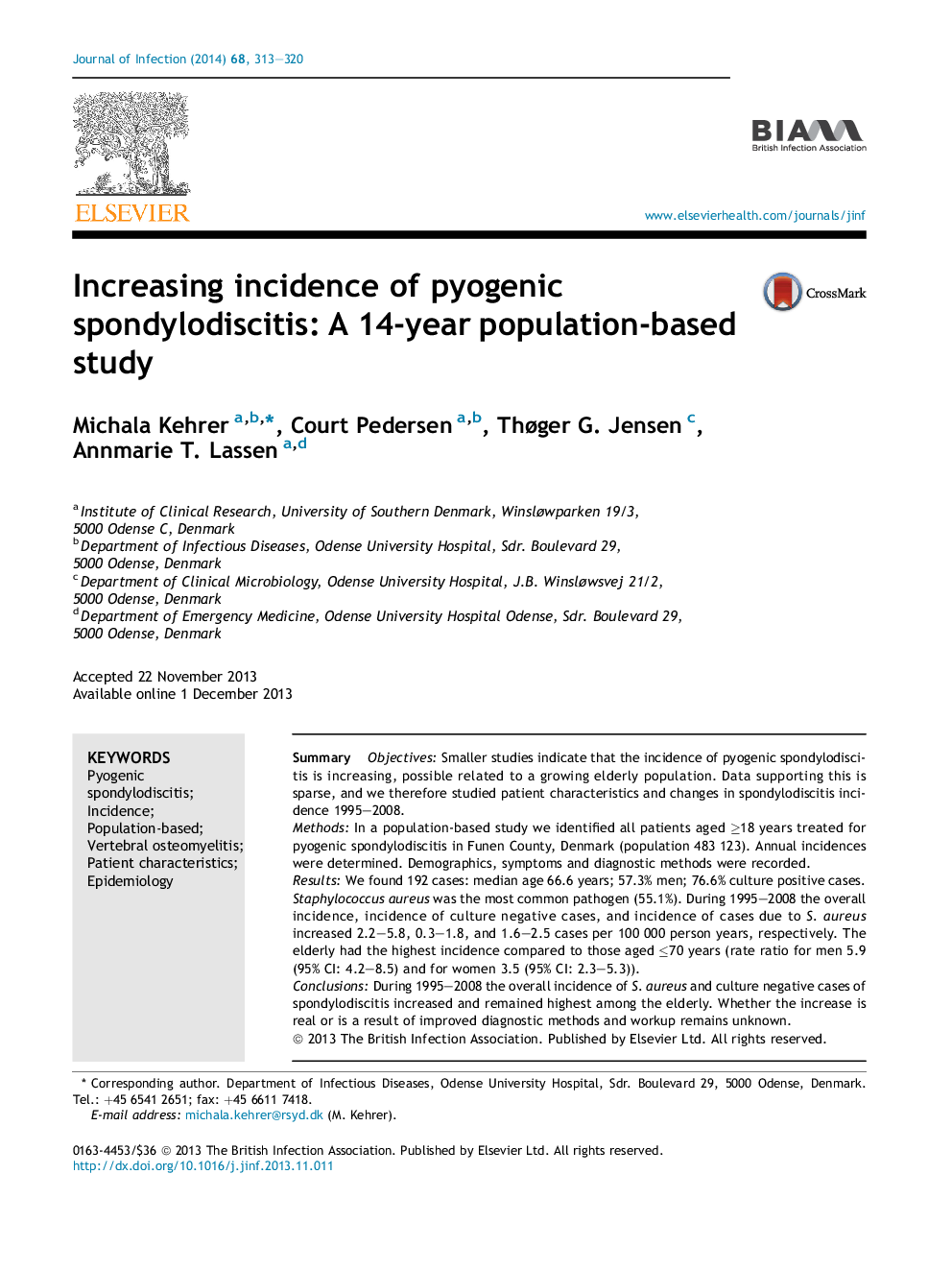| Article ID | Journal | Published Year | Pages | File Type |
|---|---|---|---|---|
| 6123169 | Journal of Infection | 2014 | 8 Pages |
SummaryObjectivesSmaller studies indicate that the incidence of pyogenic spondylodiscitis is increasing, possible related to a growing elderly population. Data supporting this is sparse, and we therefore studied patient characteristics and changes in spondylodiscitis incidence 1995-2008.MethodsIn a population-based study we identified all patients aged â¥18 years treated for pyogenic spondylodiscitis in Funen County, Denmark (population 483 123). Annual incidences were determined. Demographics, symptoms and diagnostic methods were recorded.ResultsWe found 192 cases: median age 66.6 years; 57.3% men; 76.6% culture positive cases. Staphylococcus aureus was the most common pathogen (55.1%). During 1995-2008 the overall incidence, incidence of culture negative cases, and incidence of cases due to S. aureus increased 2.2-5.8, 0.3-1.8, and 1.6-2.5 cases per 100 000 person years, respectively. The elderly had the highest incidence compared to those aged â¤70 years (rate ratio for men 5.9 (95% CI: 4.2-8.5) and for women 3.5 (95% CI: 2.3-5.3)).ConclusionsDuring 1995-2008 the overall incidence of S. aureus and culture negative cases of spondylodiscitis increased and remained highest among the elderly. Whether the increase is real or is a result of improved diagnostic methods and workup remains unknown.
